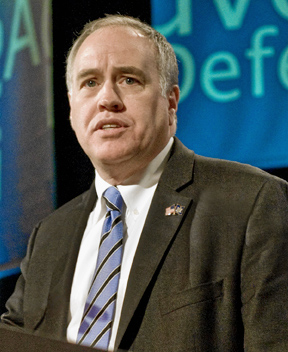
In the race for New York State Comptroller, incumbent Thomas DiNapoli is guarding a comfortable 20-point lead in the polls.
But his challenger, political unknown Bob Antonacci, isn’t holstering his guns quite yet.
Both candidates over the weekend sparred about the place of private equity in New York’s pension portfolio.
Under DiNapoli, New York’s Common Retirement Fund (CRF) allocates 8 percent of assets to private equity. Antonacci thinks that’s far too much.
From the New York Post:
DiNapoli’s challenger in the state comptroller’s race warned that private-equity investments look good now, but can turn bad very quickly.
“Private-equity investments can be very risky,” says Republican Bob Antonacci.
He agrees that it is a good idea to diversify state retirement portfolios beyond stocks and bonds. But 8 percent in private equity is excessive, he says.
“I think the problem is that he (DiNapoli) is putting too much emphasis on risky investments,” Antonacci said.
He added that the comptroller is seeking out chancier investments because his goal is to obtain a 7.5 percent return a year. That, Antonacci adds, is an unrealistic expectation.
“We are taking chances on getting returns that aren’t going to be there in the long run,” Antonacci says.
DiNapoli’s office responded:
“The comptroller sees private equity as diversifying the investment portfolio and getting better investment returns,” says DiNapoli spokesman Matthew Sweeney.
[…]
The recent numbers show that using private equity reduces risk through portfolio diversification, DiNapoli’s spokesman said. That, he adds, reduces risk.
New York State and Local Retirement Systems earned 14.9 percent over the past decade on the private equity part of the investments, according to a new report from the Private Equity Growth Capital Council (PEGCC).
The State Comptroller oversees $181 billion in pension assets. Recent polls have DiNapoli leading Antonacci, 58 percent to 31 percent.
Photo by Awhill34 via Wikimedia Commons
